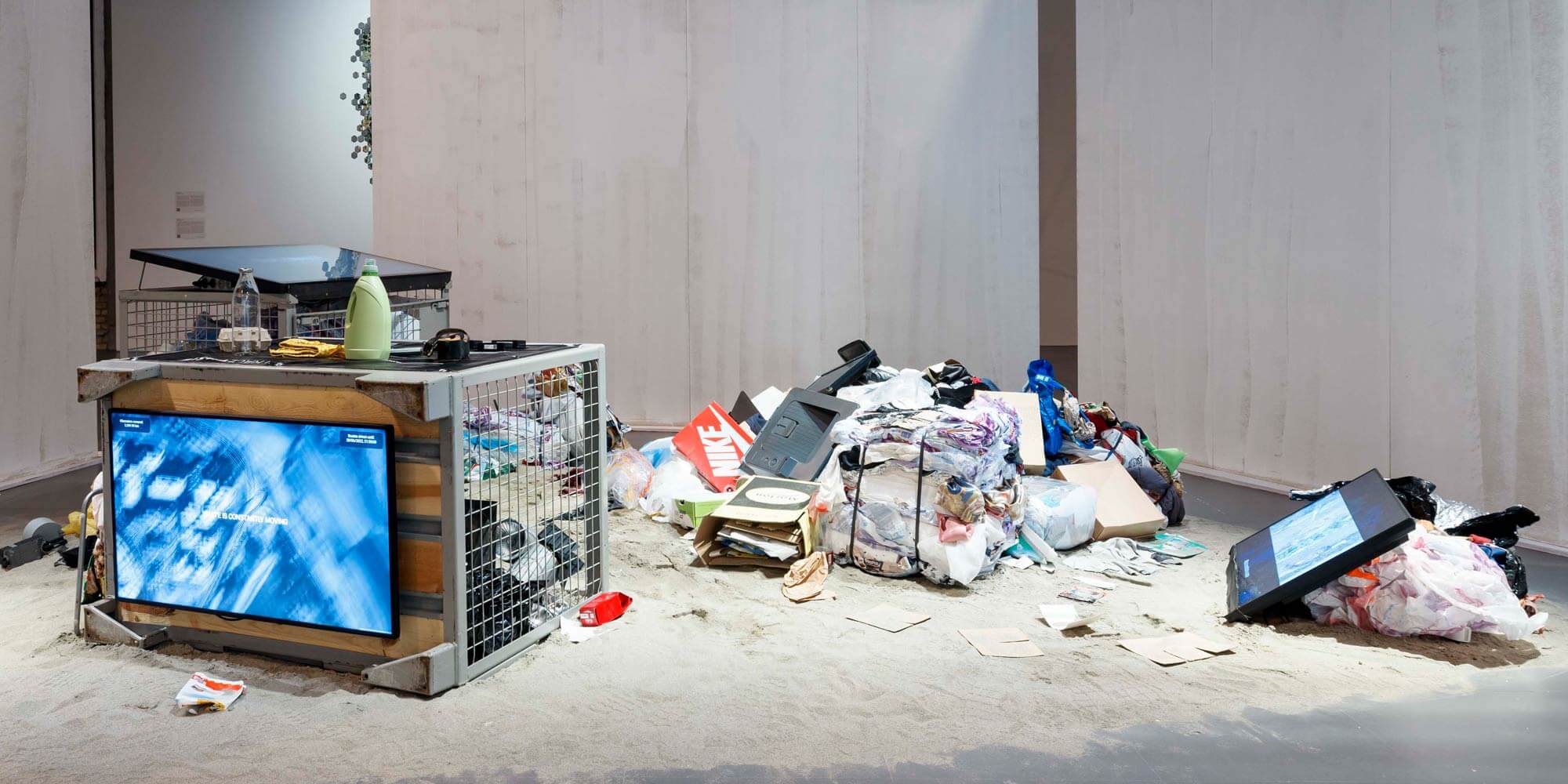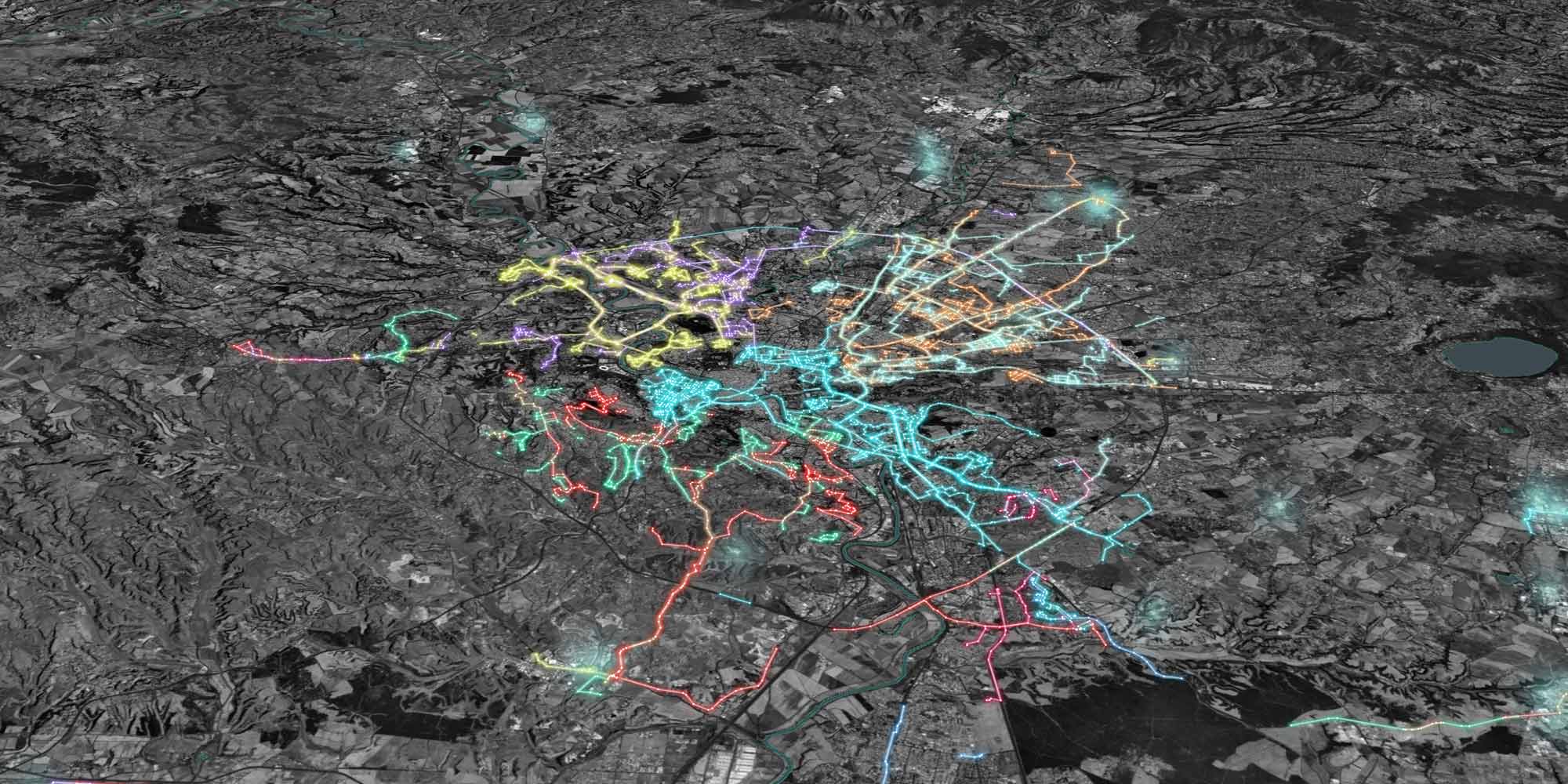Nomination
The project TRACEWASTE observes and visualizes garbage movements from a citizen’s perspective to explore future urban life in the context of waste management. It tracks discarded objects using geolocation methods, providing insights into waste whereabouts, transport durations, distances, and emissions. IoT devices (0G) in a low power wide area network track various types of waste across Italy, with a special focus on textiles and plastics. Monitoring rubbish collection vehicles within Rome additionally captures urban waste collection dynamics. The interactive audio-visual installation, resembling an island of waste, challenges waste disposal culture, triggering discussion on global waste challenges. An interactive interface visualizes garbage routes, allowing hands-on exploration through a touch screen.

The soundscape incorporates electromagnetic emissions from tracking devices and recordings of rubbish trucks and urban waste sounds. The non-linear interaction between installation and viewers creates a unique experience. The first part of the TRACEWASTE project was completed at MAXXI Museo Roma’s REWILD exhibition, showcasing the prototype installation.
Credits
Assistance, design: Dimitrije Andrijević, Sound Design: Sebastian Scholz, Coding: Max Pellert
Technology partnership: Paul Pinault, Ingenious Things
Production partners: Alexander Gutsche, Reinhard Taurer
Advisors: Armando Montanari, Florian Matzka, Gojer, HEB Hagen, Abfallwirtschaftsverband Lavanttal, Christian Fuchs, AMA Roma
Supported by SONY CSL: Vittorio Loreto, Alessandro Londei, Bernardo Monechi, Matteo Bruno & MAXXI Foundation: Chiara Bertini and Alessio Rosati in the framework of the artist residency “Big Data and the City”
The project has received funding in the framework of the European S+T+ARTS initiative, project “Repairing the Present” from the European Commission’s Directorate-General for Communications Networks, Content and Technology under grant agreement LC01641664.
Biography
Susi Gutsche (AT) is a research-driven artist with a background in Social Design — Arts as Urban Innovation, the humanities and scientific laboratory work. She participated in archaeological excavations and worked in clinical research settings. In her works, she is primarily interested in the intersection of art and everyday life, routines and their aesthetics, addressing societal and environmental processes in urban contexts. Through an experimental approach, she engages with multiple media, combining video, photography, participative actions, and unconventional materials/technologies.



